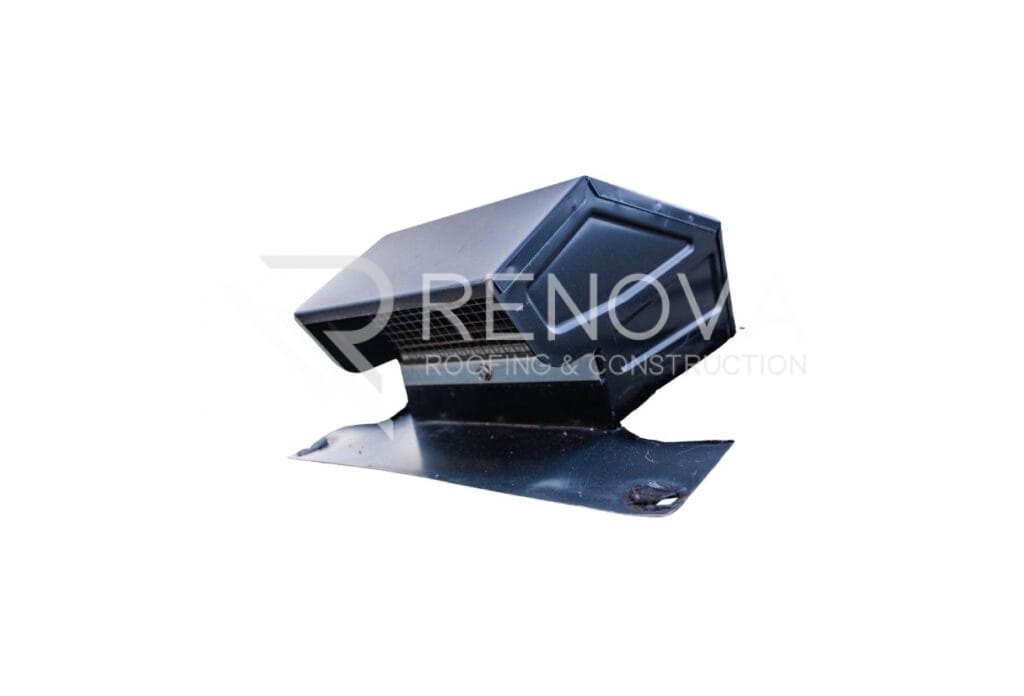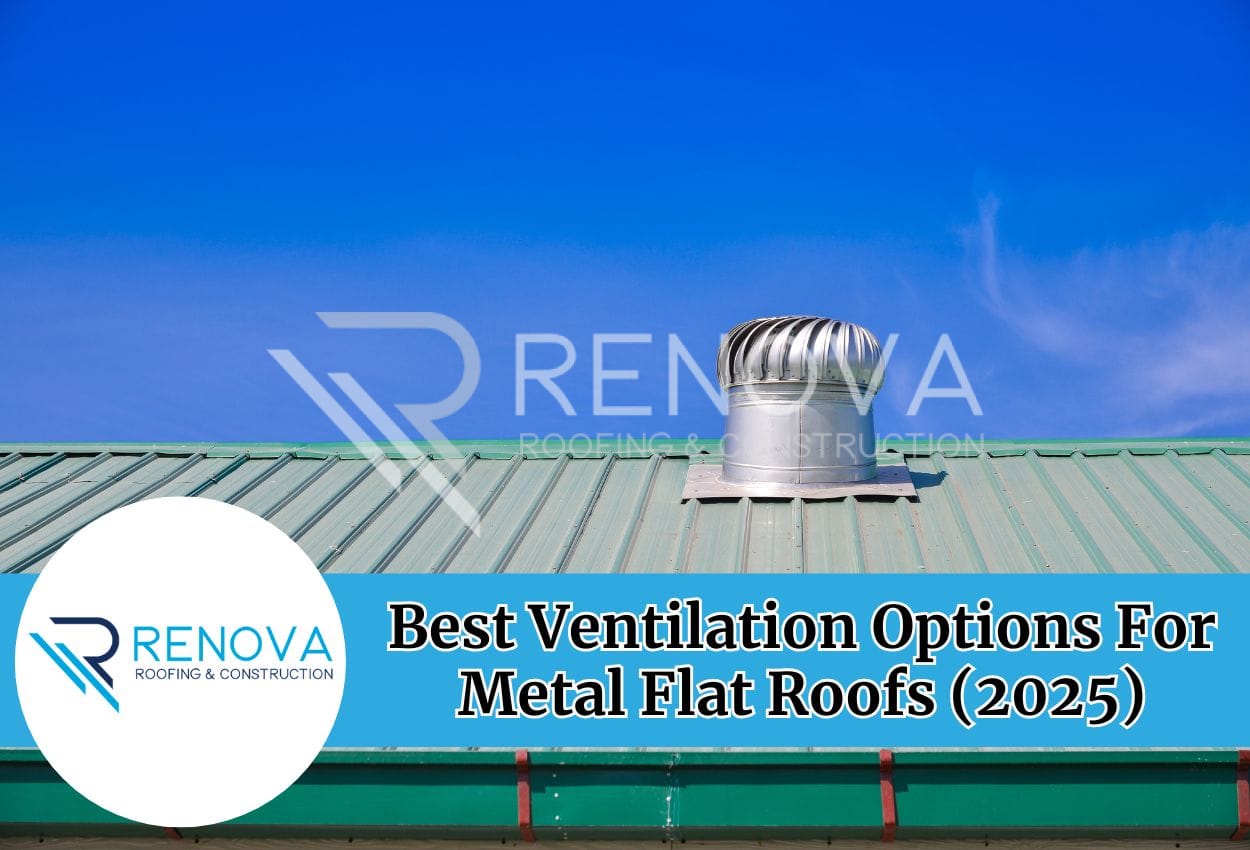For a building to be structurally sound, energy-efficient, and comfortable overall, its roof must have adequate ventilation. This is particularly true for metal flat roofs, where adequate ventilation can help avoid moisture accumulation, temperature swings, and early deterioration.
This blog post will go over the best ventilation options for metal flat roofs and why they are important.
What is Roof Ventilation?
First, let’s try to understand what roof ventilation is. Simply put, in order to balance indoor temperatures, roof ventilation encourages consistent airflow in the attic. A ventilation system has exhaust vents to expel hot, stale air and intake vents to bring in fresh air.
By controlling temperature and moisture, this system prevents summer overheating and winter problems like mold or condensation. Proper ventilation also increases energy efficiency and prolongs the life of roofing materials.
Why Ventilation Is Crucial for Metal Flat Roofs
Below are some reasons why proper ventilation is essential for metal flat roofs and how it can benefit your home or building:
1. Heat Control
Metal roofs can trap heat, making interiors warmer. Ventilation helps release this heat, keeping the indoors cooler.
2. Moisture Prevention
Condensation on metal roofs can lead to mold and rust. Good ventilation stops moisture buildup, protecting your roof and attic space.
3. Protects the Roof
Without proper airflow, heat and humidity can damage the roof. Ventilation helps maintain the roof’s strength and protects it from harsh weather.
4. Longer Roof Life
Ventilation reduces heat and moisture damage, which helps your roof last longer and lowers repair costs.
5. Saves Energy
Proper ventilation keeps your attic cooler, reducing the need for air conditioning and lowering your energy bills.
6. Better Air Quality
Ventilation removes excess moisture and pollutants, improving the air quality inside your home or business and making it healthier.
Key Types Of Roof Vents for Metal Flat Roofs in 2025
Now, let’s dive into the best roof ventilation system options available for metal flat roofs in 2025:
#1. Soffit Vents

One of the best types of intake vents, soffit vents are essential for maintaining metal flat roofs. They allow fresh air in and push stale air out, helping control attic temperature and moisture. This is especially important for metal roofs, which can get extremely hot in summer. By reducing heat buildup and moisture, soffit vents prevent damage, keep living spaces comfortable, and extend the roof’s lifespan.
- Steady air movement reduces humidity and mold.
- Brings in cool air in summer.
- Less HVAC use lowers energy bills.
- Reduces condensation, protecting insulation and roofing.
- Prevents heat damage, extending roof lifespan.
#2. Box Vents

An easy and affordable ventilation solution, box vents work well for metal flat roofs by allowing hot air to escape. These vents are square or rectangular and can be installed in clusters for improved airflow. Though not as efficient as other vents, box vents are cost-effective and require minimal maintenance, making them a popular choice for both residential and commercial applications.
- Simple installation saves time and labor.
- Versatile design works with different roof types.
- Clusters can enhance airflow efficiency.
- Affordable with low maintenance requirements.
- Effective solution for regulating attic temperatures.
#3. Whirlybird Vents

Whirlybird vents, also known as turbine vents, are wind-powered and provide an active ventilation method for metal flat roofs. These rotating turbines spin in the wind, drawing out hot air and moisture, which helps keep the attic cooler without using electricity. This option is perfect for hot climates and requires little maintenance. It also improves air quality by expelling stale air and allowing fresh air to circulate.
However, whirlybird vents are not always recommended for flat roofs because they rely on wind power. Consult a roofing professional before choosing this vent for your metal flat roof.
- Wind-powered, eliminating the need for electricity.
- Actively removes hot air, improving comfort.
- Easy installation with minimal maintenance.
- Reduces indoor temperatures during warm months.
- Enhances air quality by circulating fresh air.
#4. Mushroom Vents
Mushroom vents have a unique dome shape that helps stabilize roof temperatures and allows moisture to escape. Ideal for metal flat roofs, they promote consistent airflow and prevent overheating. These vents can be installed individually or in groups, depending on the size of the roof. Their weather-resistant materials ensure durability in harsh conditions, providing reliable ventilation over time.
- Stabilizes indoor temperature and prevents overheating.
- Dome shape minimizes water intrusion.
- Allows moisture to escape from the attic space.
- Can be installed individually or in groups.
- Durable materials ensure longevity, even in tough weather.
#5. Pop Vents
The last option, pop vents, feature mechanical fans that actively improve airflow within the attic. These vents can either expel hot air or bring in fresh air, depending on their configuration, making them highly adaptable for varying ventilation needs. They are especially useful in spaces where natural airflow is insufficient. Pop vents also improve indoor air quality by removing stale air and pollutants, with some models featuring automatic controls to optimize performance.
- Mechanical fans enhance airflow efficiency.
- Flexible design allows for air expulsion or intake.
- Ideal for buildings with limited natural ventilation.
- Improves air quality by expelling stale air.
- Automatic controls optimize performance based on conditions.
Also Read: Soffit Vents vs. Ridge Vents: Which is Better?
Factors to Consider When Choosing a Ventilation System For Your Metal Flat Roof
Below are some key factors you need to think about when selecting vents:
1. Local Climate
Hot climates might need more exhaust vents to release heat, while cold climates may need more intake vents to reduce moisture.
2. Roof Design
Larger or flat roofs may need more or specific vents for better airflow.
3. Ventilation Type
A mix of exhaust and intake vents ensures fresh air enters and stale air exits.
4. Building Codes
Follow local codes for proper ventilation to avoid issues and ensure efficiency.
5. Material Durability
Metal vents last longer and handle the weather better than plastic.
6. Maintenance
Choose vents that are easy to maintain and check them for damage regularly.
How to Calculate Roof Ventilation On a Flat Roof
To make things easier, let’s go over how to calculate the right amount of ventilation for your roof:
1. Measure Roof Area
Multiply length and width to get the area of your roof. For example, 40 feet × 25 feet = 1,000 square feet.
2. Calculate Vent Area Needed
One square foot of ventilation is needed for every 300 square feet of roof area. For 1,000 square feet, you need 3.33 square feet. (1,000 ÷ 300 = 3.33)
3. Split Between Intake and Exhaust
Divide the vent area evenly to account for intake and exhaust vents: (3.33 ÷ 2 = 1.67 square feet.)
4. Determine the Number of Vents
If each vent has 1.5 square feet of net free area (NFA), you need three vents. For vents with 0.75 square feet NFA, you need five vents.
Need Better Ventilation for Your Metal Flat Roof? Contact Rеnova Roofing & Construction
Choosing the right ventilation system for your metal flat roof is key to maintaining its performance and longevity. Understanding the different vent types—like those we’ve discussed above—ensures you can select the best option to suit your roof’s specific needs.
For the best ventilation for your metal flat roof, Renova Roofing & Construction is here to help. Our experienced team provides effective roofing services that fit your roof’s needs. We use high-quality materials and the latest methods to keep your roof well-ventilated. Contact us today at (601) 647-3433!

